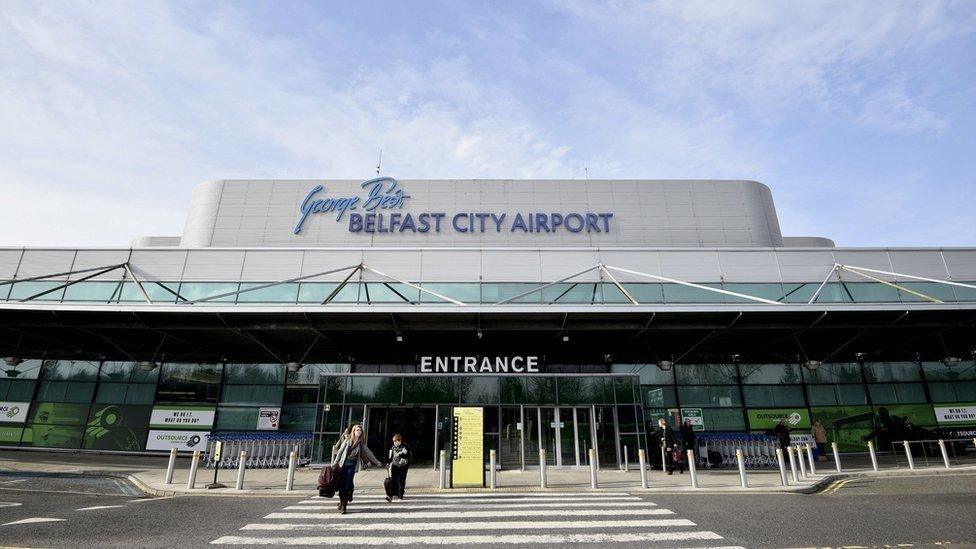Covid-19: Omicron spread not matched by hospital admissions
- Published
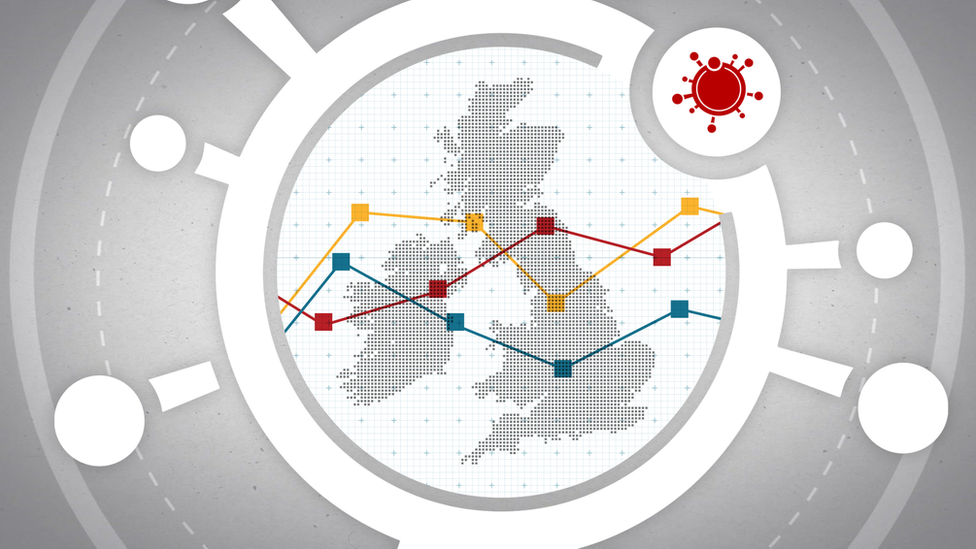
Omicron has taken over as the dominant variant of coronavirus in Northern Ireland.
The number of confirmed cases - like the rest of the UK and Ireland - has climbed to a level not previously seen.
Since Christmas, both hospitalisations and the death rate have increased. But crucially these growths - so far - have been slow.
It is also important to remember that the Delta variant of the virus is still present in Northern Ireland.
Cases and infection rates
In the run up to Christmas, Northern Ireland's case rate (as measured by a seven-day rolling average) began to increase.
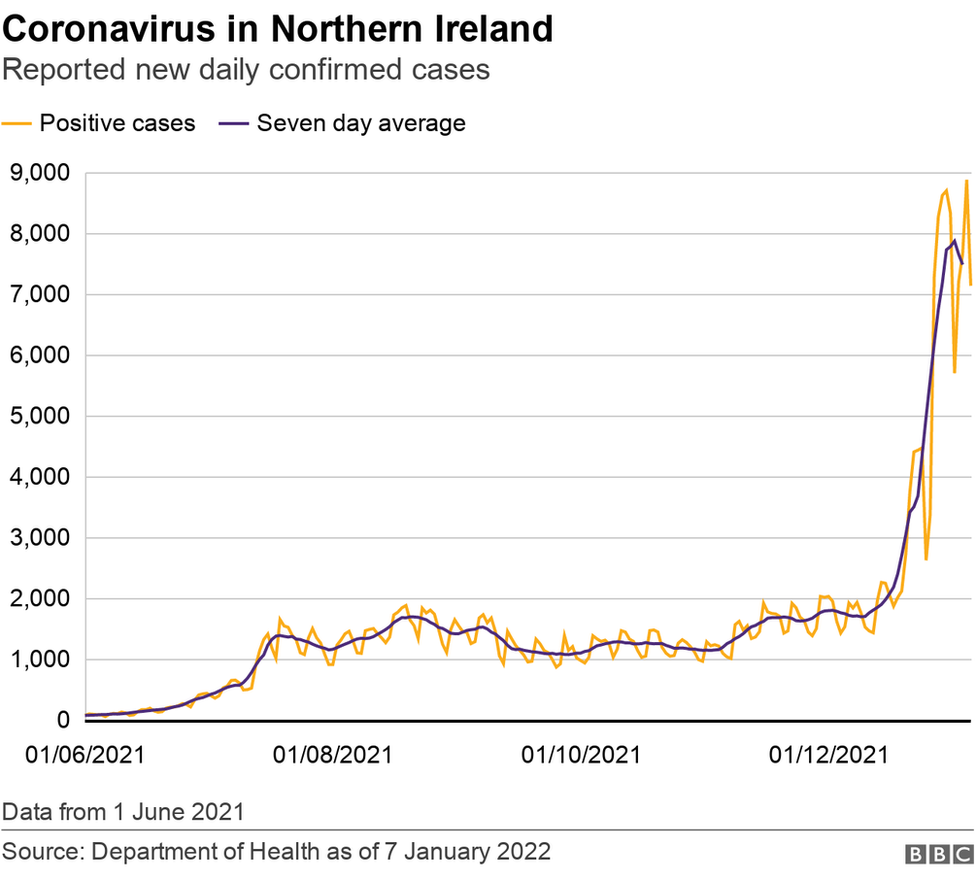

It grew to about the same level as had been seen in January 2021 - around 1,750 expected cases per day.
It kept going, and Northern Ireland went above 2,000 expected daily cases.
The number of confirmed cases over the Christmas period blew that figure out of the water, going above 7,800 on New Year's Day.
This has fallen slightly in the past week, but still remains very high at 6,818.
Levels of testing in Northern Ireland are also very high.
More than 156,000 people were tested for the virus over the past week.
That means about one in every 12 people in Northern Ireland got a Covid test in the past seven days.
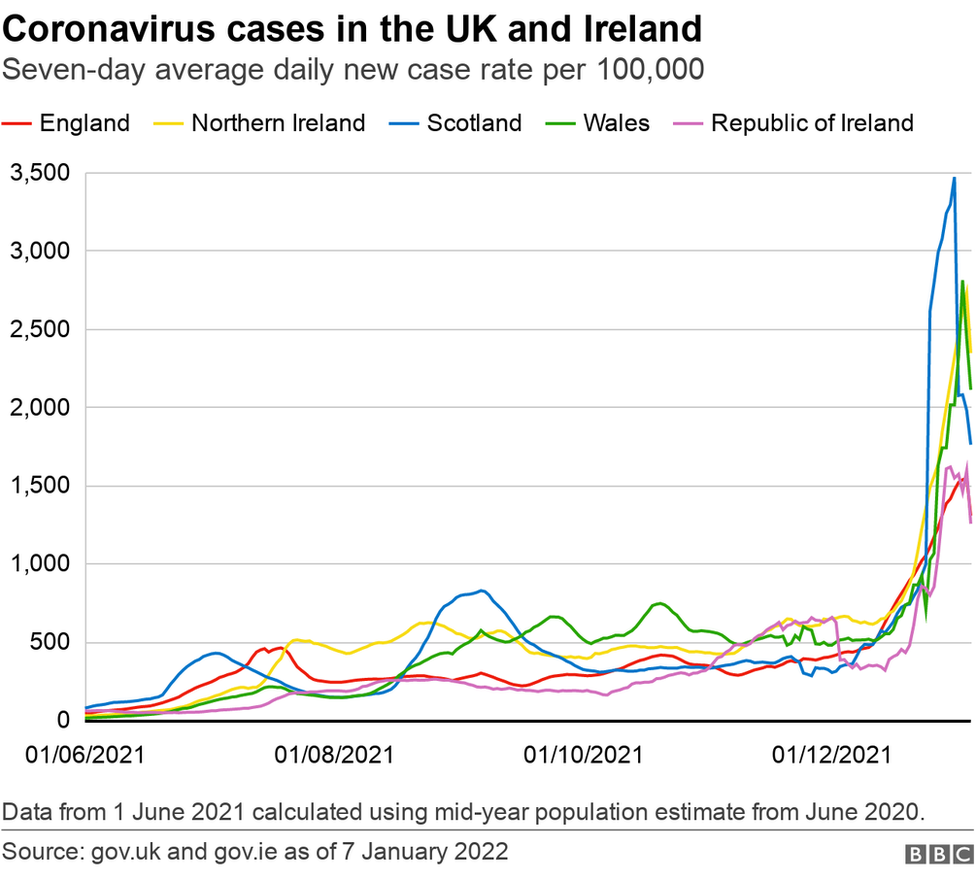

The positivity rate for tests has been about 30% over the past week, meaning that nearly one in three people tested got a positive result.
Comparatively, Northern Ireland's testing rate is higher than the Republic of Ireland.
But despite this, one out of every two people tested in the Republic over the past week got a positive result.
UK government data shows Northern Ireland having the worst infection rate in the UK.
The following are the infection rates per 100,000 population for the week up until 2 January:
England - 1,786.8
Scotland - 2,079.5
Wales - 2,577.6
Northern Ireland - 2,852.7
The Republic of Ireland's infection rate for the same period was 2,277.3.
On a more local basis, UK government data shows three Northern Ireland council areas as having the worst infection rates in the UK - Derry City & Strabane (4,836.9); Fermanagh & Omagh (3,840.2); and Newry, Mourne & Down (3,105.1).
These infection rates are simply massive in comparison to what went before during the pandemic to date.
But they don't tell the whole story.
It is worth bearing in mind that they capture confirmed cases following a test.
And because Omicron is so transmissible, the real number of Covid cases in the community will be higher than that captured by the testing regime.
The reproduction number - or R number - represents an estimate of the people to whom an infected person will pass the virus.
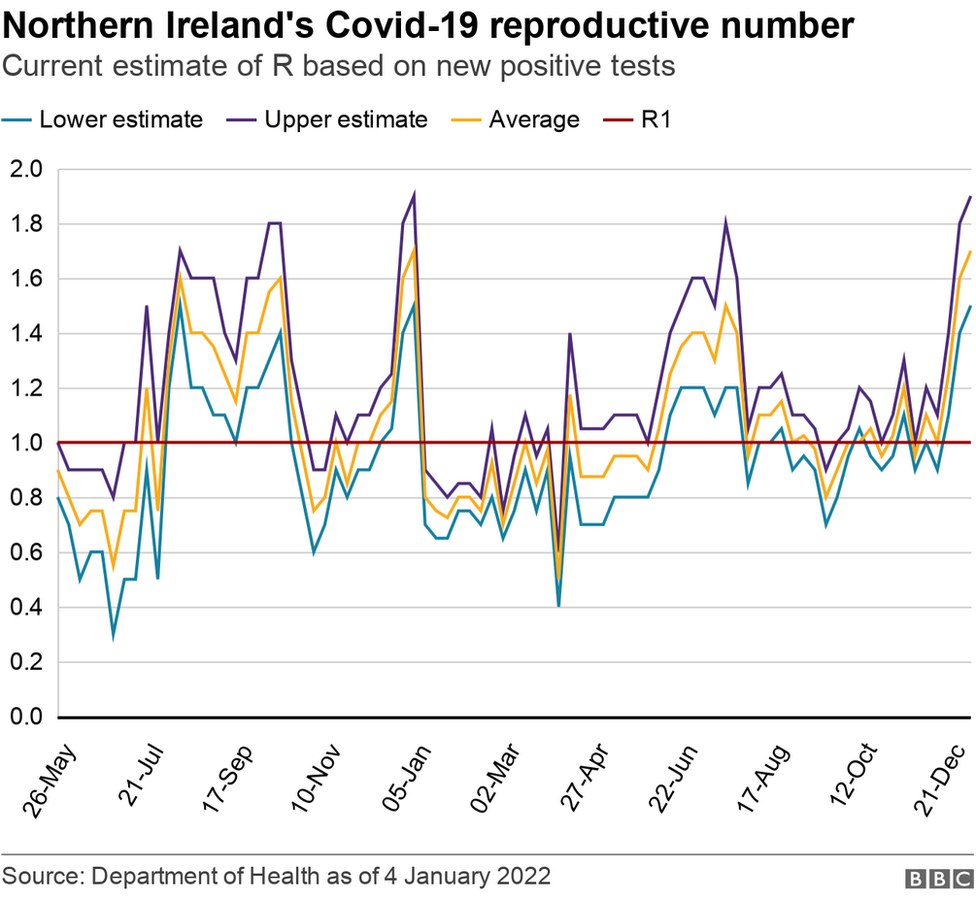

If the R number is one, it is believed than an infected person will pass the virus on to one other person.
This means that an R number below one indicates that virus spread is diminishing.
A number higher than one means the virus is spreading.
Northern Ireland's latest R number for cases in the community is estimated to be between 1.5 and 1.9 - meaning that the virus is spreading rapidly.
The document which details Northern Ireland's R number, external suggests case numbers are expected to peak by mid-January.
It also notes limits to the data on case numbers because Northern Ireland is now testing at "maximal levels".
"Testing has remained roughly steady and is now at maximal levels; as a consequence case numbers will no longer be reliable indicator of the course of the pandemic."
In short, it is expected that we will soon get to the point where we simply cannot test enough in order to give an entirely accurate picture of case numbers.
Hospitalisations
While there has been a massive jump in case numbers, there has not been an equivalent huge spike in people in hospital with the virus.
That said, the trend has certainly been one of increasing numbers of hospitalisations.


About an extra 100 people were in hospital with the virus on New Year's Day when compared to Christmas Day.
There are currently more than 400 people in hospital in Northern Ireland with Covid-19.
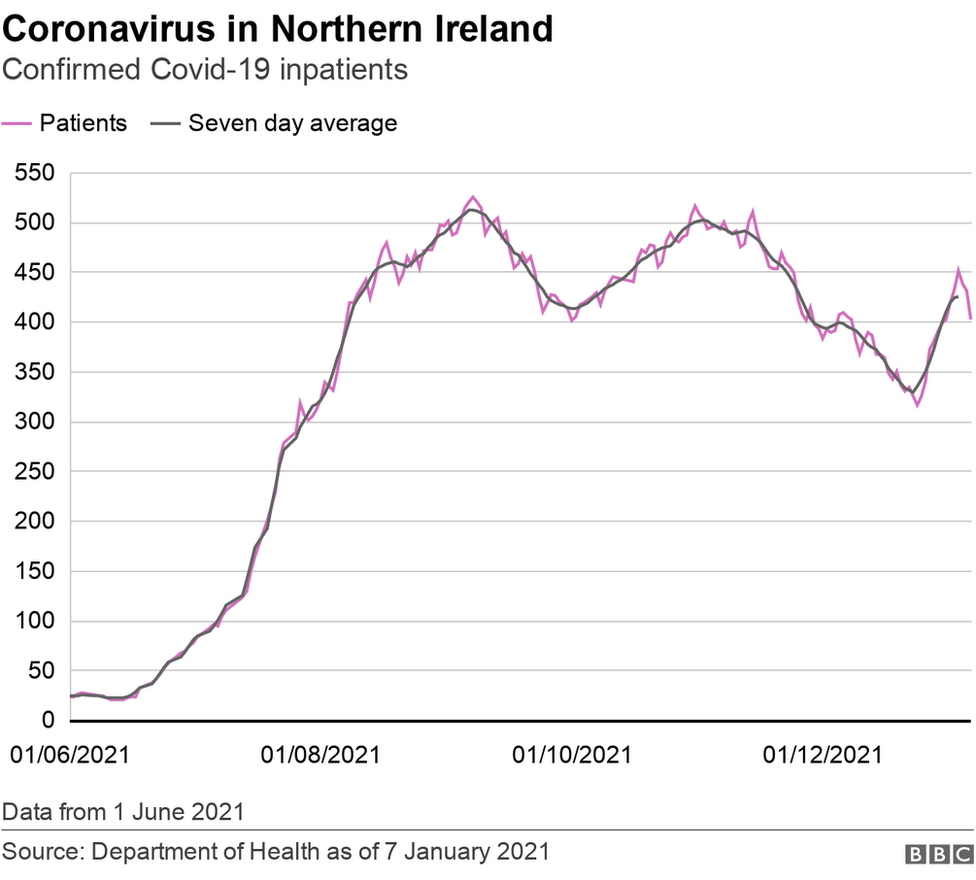

Likewise, admissions have increased steadily over the Christmas and New Year period, meaning that it is reasonable to expect hospital numbers to climb in the short-term.
An important figure that remained more or less consistent over Christmas and New Year is the number of Covid-positive patients requiring intensive care (ICU).
This has generally hovered between 30 and 35 for almost a month.
It indicates that despite increasing case numbers, the number of very ill people has not increased.
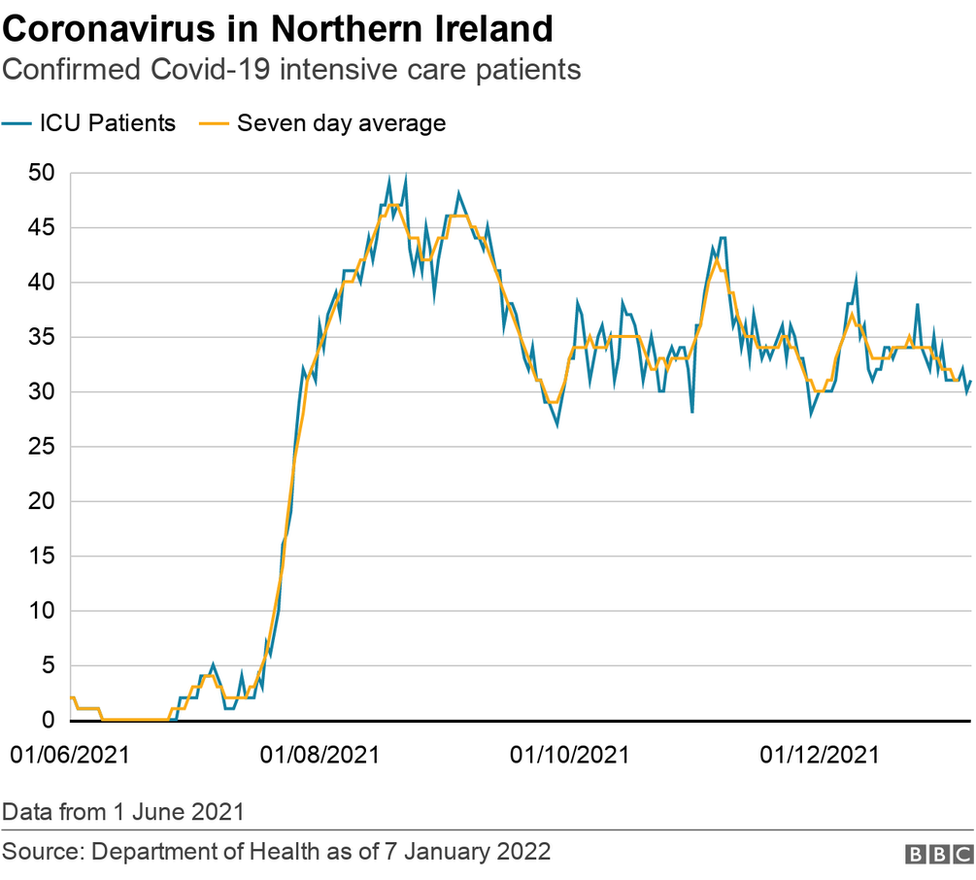

Of the 31 people with Covid in ICU, 26 are ventilated, requiring help to breathe.
Northern Ireland's hospitals are still under pressure. There are 200 more people in hospital than there are beds available.
This over capacity has been a recurring situation for more than seven months now.
Deaths
The Department of Health (DoH) has now recorded more than 3,000 Covid-related deaths in Northern Ireland since the start of the pandemic.
These are deaths - for any reason - occurring within 28 days of a positive Covid test.


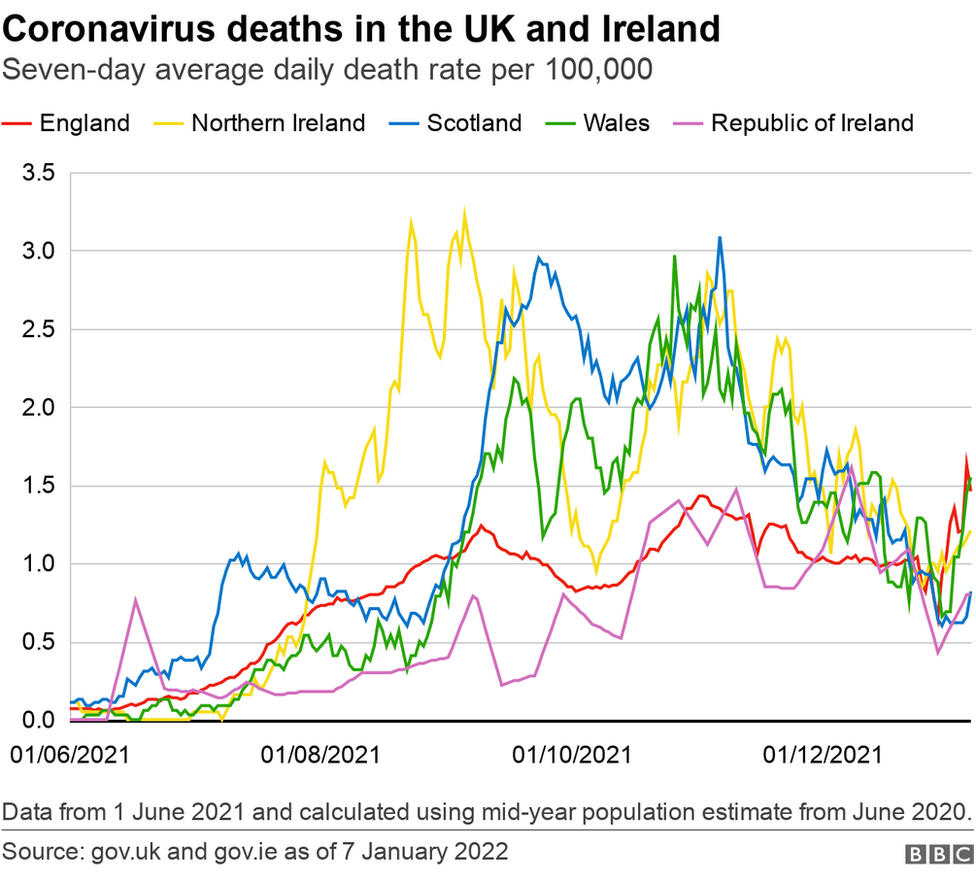

The death rate has risen very slightly since Christmas.
But for context, it is much reduced from the start of November.
Similarly, the number of Covid-related deaths recorded by the Northern Ireland Statistics and Research Agency (Nisra) has fallen.
Vaccinations
Northern Ireland still has the lowest rate of vaccination in the UK.
This applies to first, second and booster doses.
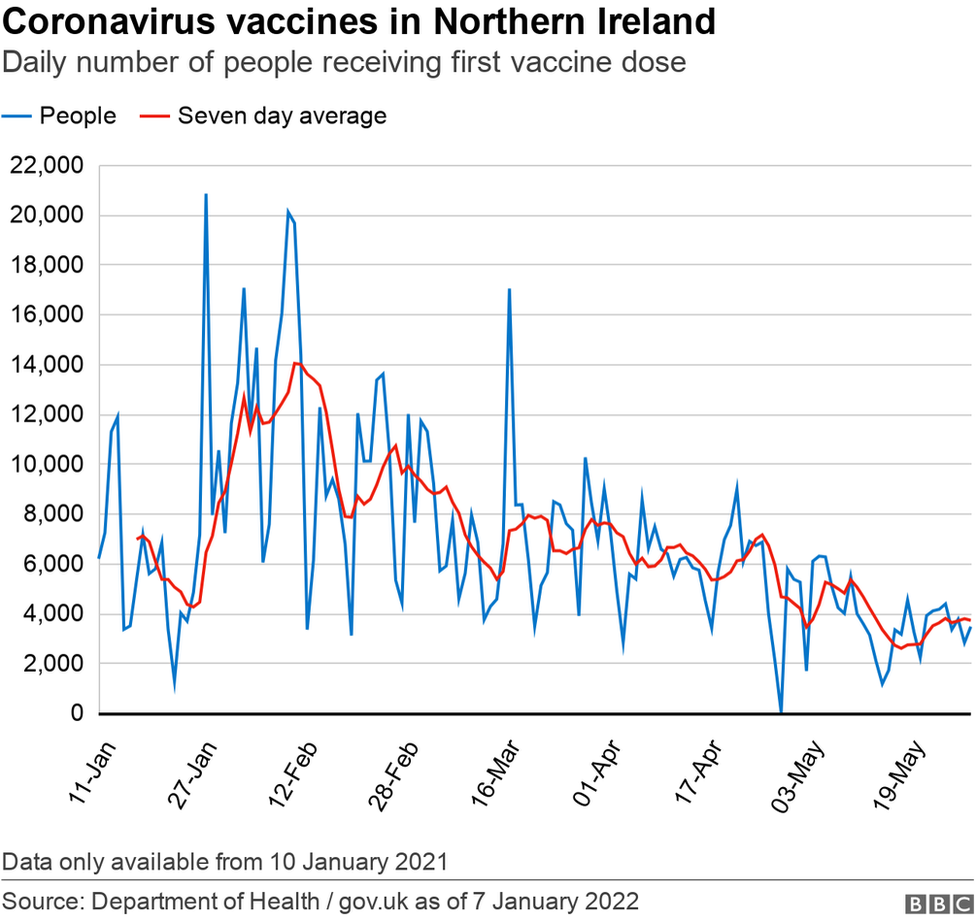

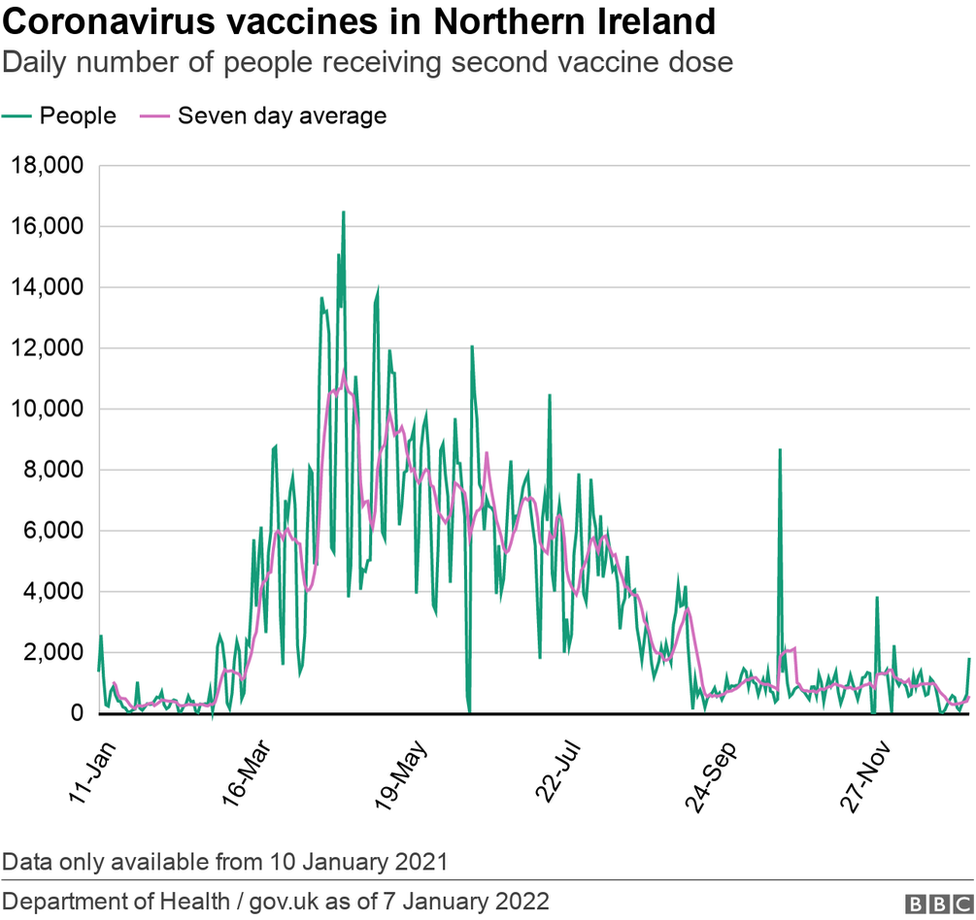

Almost 88% of people in Northern Ireland aged 12 and over have had a dose of vaccine.
Just over 81% have had a second dose.
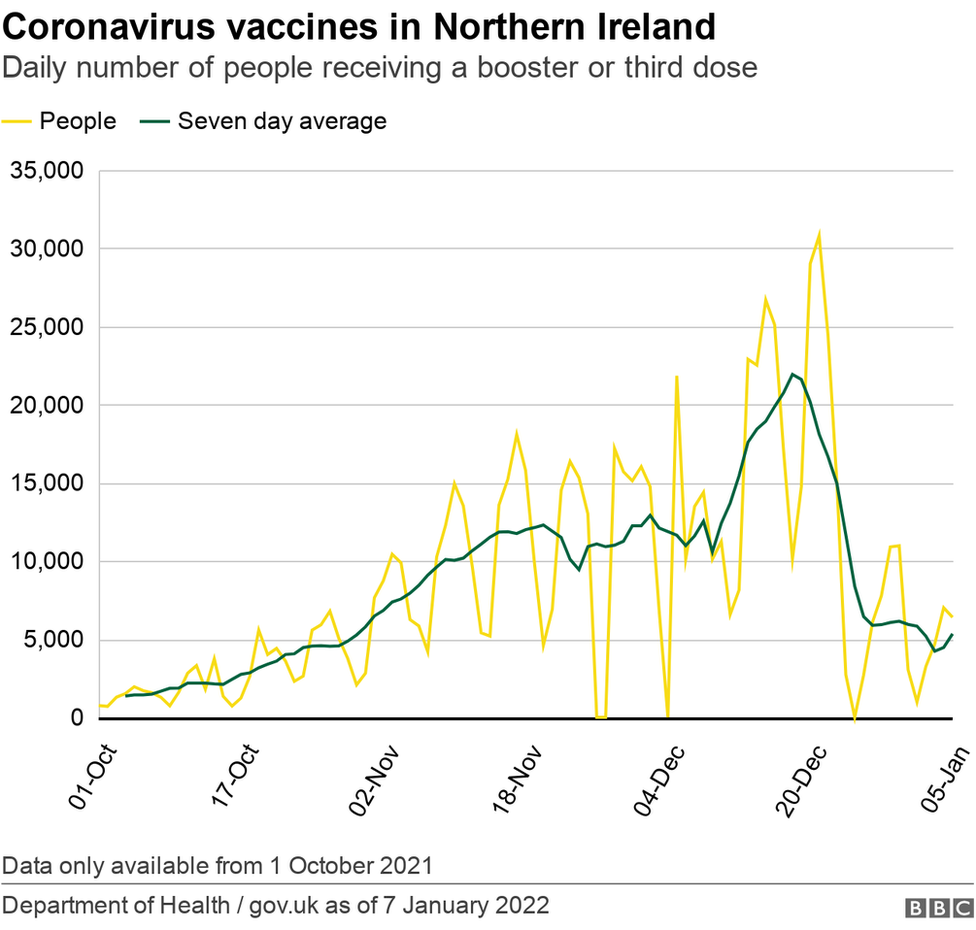

According to UK government data, the uptake of third/booster doses across the UK is as follows:
England - 60.8%
Scotland - 64%
Wales - 63.5%
Northern Ireland - 53.6%
The gap between Northern Ireland and Great Britain in booster dose uptake has been fairly consistent since early December.
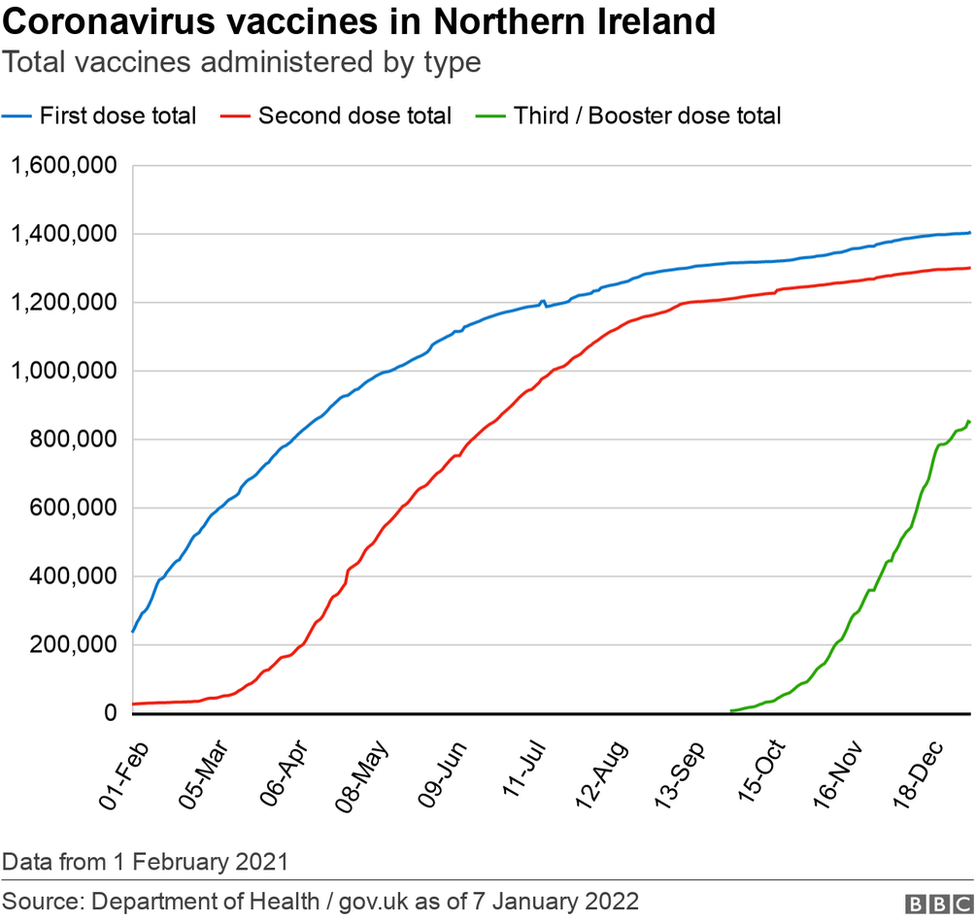

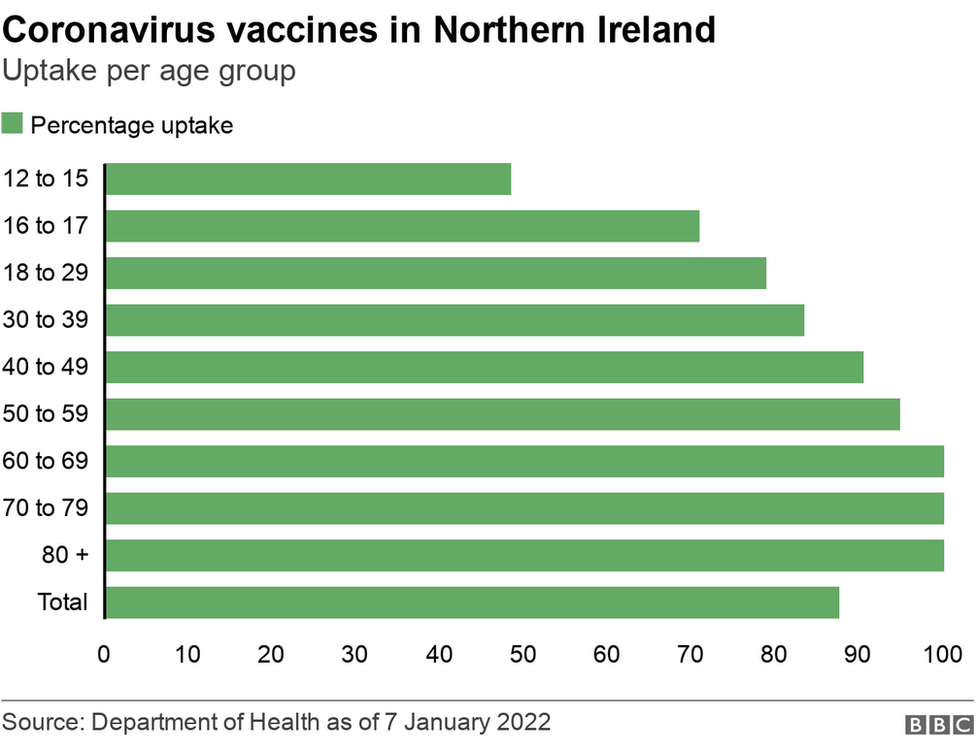

Based on the figures provided by the Northern Ireland vaccine dashboard here are the third dose/booster uptake rates by adult age groups:
18-29 - 25.7%
30-39 - 38.2%
40-49 - 55.6%
50-59 - 71.6%
60-69 - 83.4%
70-79 - 88.4%
80+ - 85.2%
Like all parts of the UK, Northern Ireland saw a lull in vaccinations over Christmas and the New Year.
With such a high rate of transmission at the moment, health officials will be hoping that vaccination uptake increases once again in the coming days and weeks.
Related topics
- Published16 February 2022
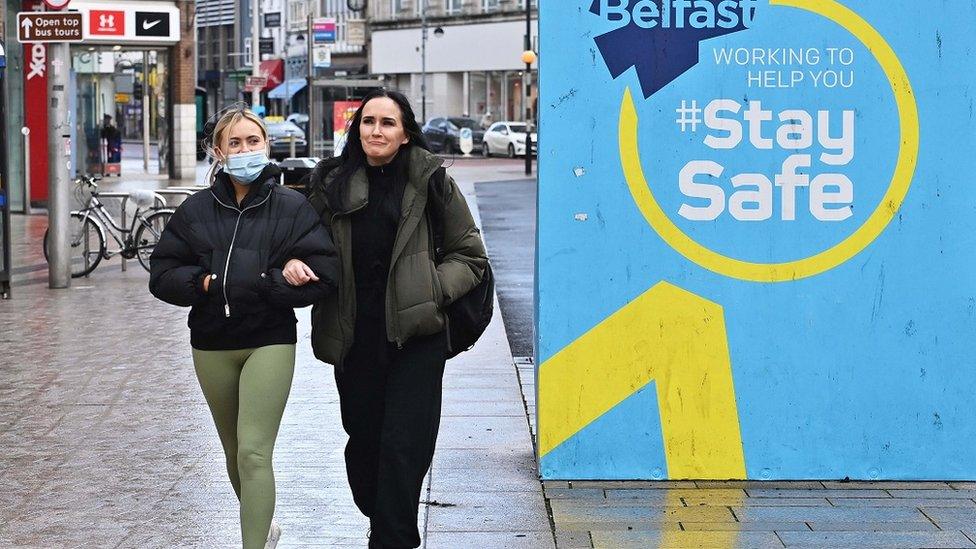
- Published7 January 2022
